As Steve Jackson writes in The Australian, both Nine’s 60 Minutes and Seven’s Spotlight are said to be in deep negotiations, dangling serious dollars in a high-stakes race for exclusive rights.
Monday June 2, 2025
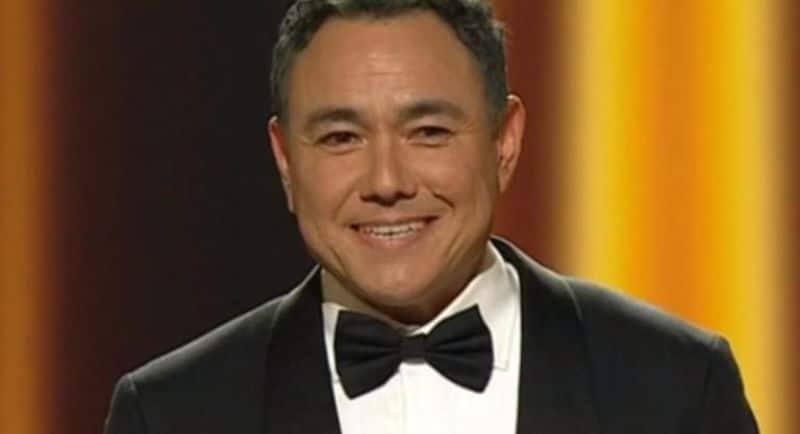
Sam Pang back on Seven to host the 2025 Logies
Details for the 65th TV Week Logie Awards were announced today by the Seven Network. The 2025 Logies will screen on Sunday August 3 August with Sam Pang back to host the show for the third time.
This years TV Week Logie Awards will be broadcast live from The Star Sydney on Seven and 7plus.
Sam Pang said: “I am very excited to return for another Logies and would like to thank Seven for asking me back. It’s been an honour to host the last two years and I’m looking forward to again celebrating the talented people and amazing shows that combine to make the Australian television industry something everyone can be proud of.”
There had been speculation as to whether Seven would bring back Pang to host, with Pang now hosting Sam Pang Tonight for rival broadcaster Ten. This will be the third consecutive Logies hosted by Pang.
Seven West Media Managing Director and Chief Executive Officer, Jeff Howard, said: “The Logies are part of the fabric of Australian TV and the industry’s night of nights. We are proud to once again partner with TV WEEK and The Star Sydney to present all of the glamour, excitement and fun of the red carpet and the 65th TV WEEK Logie Awards.
“Last year, the Logies proved their enduring appeal, reaching 3.5 million people and drawing a total TV audience of 1.44 million, up on 2023 and the biggest Logies audience since 2016. It is fantastic that the brilliant Sam Pang is steering the ship again in 2025. We look forward to unifying Australia’s TV industry and recognising another year of excellence with our exclusive awards broadcast.”
The Logies have been staged in Melbourne almost every year since the first event in 1959. Even that one time in 1967 when the Logies were held on the Fairstar cruise ship, the boat remained berthed at Melbourne’s Station Pier. In 1961 they were held in Sydney, and again in 1963, 1981, and 1986. The three Logies held between 2018-2022 were all held on the Gold Coast.
This will be the third year in a row that the awards have been staged in Sydney. The event is supported by the NSW Government through its tourism and major events agency, Destination NSW.
The Star Sydney’s Property CEO, Janelle Campbell, said: “The Logies are a celebration of stars and at The Star Sydney, everyone can live like one. We’re proud to host Australian television’s night of nights, delivering an experience that’s as glamorous, elevated, and unforgettable as the talent we welcome through our doors.”
Nominations for the 2025 Logies will be announced in Sydney on Monday 16 June.

Leveraging media quality metrics to win back attention
By Christina DiLaura, Global Vice President, Attention, DoubleVerify
The fight for consumer attention has never been more intense. The days of mass media dominance are behind us, replaced by a fragmented and hyper-competitive digital landscape. Late last year, ACMA research confirmed a major shift—fewer than half of Australians now watch live free-to-air TV (46 per cent, down from 52 per cent in 2023).
Consumers today are inundated with content across an ever-expanding array of platforms, yet their ability to engage remains finite. The result? An attention recession, where the volume of advertising continues to rise, but the depth of consumer engagement is in decline.
According to WARC’s 2025 The Voice of the Marketer, media and audience fragmentation is now the top concern for 44% of marketers, outpacing even inflation and economic uncertainty as a barrier to effective marketing.
To cut through the noise, brands must rethink how they measure effectiveness. Traditional performance indicators like viewability and reach are no longer enough. Instead, attention metrics have emerged as a vital tool for brands looking to ensure their advertising doesn’t just get seen, but actually resonates and delivers impact.
The evolution of media quality metrics to include attention
Which factor drives the greatest consumer engagement—creative execution, ad placement, messaging, or something else entirely? For too long, advertisers have lacked a reliable way to answer this question. While viewability metrics ensure an ad appears on-screen, they don’t reveal whether it actually captures attention or influences behaviour.
This gap between ad exposure and meaningful engagement is a major challenge for marketers seeking to connect campaigns to business outcomes. Attention measurement offers a breakthrough by incorporating real engagement signals rather than relying on surface-level impressions.
Key attention indicators include: Viewable time – How long an ad remains on screen; Share of screen – the proportion of the screen occupied by the ad; Engagement signals – user-initiated interactions such as touches, screen orientation changes, and audio adjustments and, Ad context and suitability – ensuring an ad appears in the right environment for brand safety and impact.
A recent joint study by Lumen and Ebiquity (October 2024) confirmed attention as a key driver of conversion rate optimisation and brand profitability. The research found a near-perfect correlation (0.98) between attentive minutes per thousand ad impressions and incremental profit, across six key media channels—including TV, online video, paid social, out-of-home (OOH), cinema, and online display.
This makes a compelling case for including attention measurement as an essential performance metric, helping advertisers refine their strategies to achieve greater brand recall, stronger consumer engagement, and ultimately, higher conversions.
How brands can navigate the attention recession
However, despite the mounting evidence, many Australian brands are still failing to measure and optimise for attention. Our research with WARC shows that only 17% of APAC marketers currently measure across all four pillars of media quality—brand safety and suitability, viewability, fraud, and intended geography.
This lack of comprehensive measurement means ad dollars are still being wasted on placements that fail to drive meaningful consumer engagement. Put simply, brands are leaving valuable engagement on the table—a costly mistake in today’s competitive landscape.
For those looking to stay ahead, integrating attention metrics is no longer optional—it’s a competitive necessity. Attention measurement delivers three key advantages:
Optimising Creative for Attention – Understanding which creative elements resonate most with audiences allows advertisers to refine messaging, format, and design for maximum engagement.
Informing Strategic Ad Placement – Attention insights highlight which platforms, environments, and formats capture consumer focus, enabling brands to prioritise high-engagement placements.
Maximising Campaign ROI – By focusing investment on high-attention placements, brands can drive stronger brand recall, deeper engagement, and ultimately, better business outcomes.
Advertisers are already seeing success in applying attention metrics to improve campaign performance. Havas Hong Kong, for example, leveraged attention insights to refine its creative and media strategy for clients. By measuring attention levels across placements, the agency identified high-engagement media partners and creative formats that consistently performed well. This approach led to a 58% improvement in the engagement index. To maximise for efficiency, Havas then applied programmatic attention-based targeting to shift investment away from low-attention inventory. The result was an 83% higher clickthrough rate and a 46% lower CPC. Finally, these insights were used to inform future strategy, ensuring continuous improvements in ad effectiveness and audience engagement.
The future of attention metrics in advertising
Attention is not just another advertising metric—it’s a strategic tool that will define the next era of media measurement. In the coming years, attention metrics will become a standard tool for measuring ad effectiveness, with growing investment in AI-driven optimisation tools that help brands act on these insights in real time.
For Australian advertisers, the message is clear: Ignoring attention means missing out on performance gains, more engaged audiences, and ultimately, a stronger bottom line. Now is the time to shift focus from basic visibility metrics to measuring and optimising for true consumer attention—because in an era of media saturation, attention is the only currency that really matters.
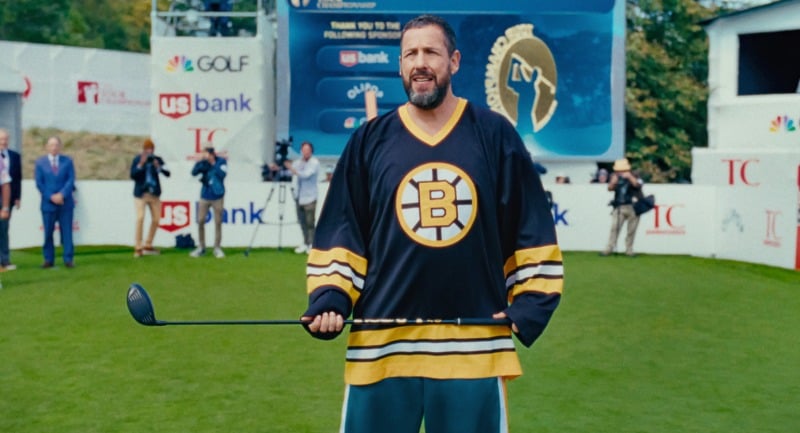
Netflix’s Tudum LIVE - Stranger Things release date, Happy Gilmore 2 & Wednesday video, and Jacob Elordi as Frankenstein's monster
This morning Netflix live streamed its annual promotional fan event Tudum LIVE. Hosted by Sofia Carson, the live show was staged in the Kia Forum in Los Angeles and included live performances from artists Lady Gaga and Humankind, along with Netflix-related news and exclusive footage reveals.
The two hour Tudum LIVE show was streamed live exclusively on the Netflix platform (and can now be rewatched). Previously, Netflix used third-party platform YouTube. The shift to it’s own platform came with a format change for Tudum, which has evolved through multiple formats since it was first staged in 2020. This year it was reimagined in a variety show format.
The major news and reveals from Tudum LIVE:
The final season of Stranger Things
The big reveal at Tudum was the release date for the fifth and final season of Stranger Things. The show became an iconic Netflix title from the weekend it launched, driving massive viewership and fan enthusiasm with every season.
Season five will be split into three parts, with the first debuting on 26 November. The second part will launch at Christmas, with the third and final batch of episodes launching on New Years Eve.
Wednesday – the first six minutes of season 2
The second season of Wednesday will be split into two parts, with the first batch of episodes due 6 August and the second batch a month later on 3 September. Wednesday is the most-watched English language TV series in the history of Netflix.
Netflix confirmed that Lady Gaga will make a cameo in the second season, having filmed her role in one day on the Irish set of the show. At Tudum she performed an original song that will feature on the soundtrack for the second season.
The first six minutes of the second season was released:
Happy Gilmore 2 trailer
The full trailer for the anticipated Adam Sandler Happy Gilmore sequel Happy Gilmore 2 was released. Returning will be Julie Bowen as love interest Virginia Venit and Christopher McDonald as villain Shooter McGavin.
New cast members will include Travis Kelce, Margaret Qualley, Bad Bunny, and Bennie Safdie.
Squid Game: Season 3 trailer
A new trailer for the third and final Squid Game season was released. The first season of Squid Game remains as the most-watched show in the history of Netflix.
The final season debuts 27 June on the streamer.
Knives Out 3
The third film in Rian Johnson’s Knives Out film series will be released on Netflix on 12 December. Wake Up Dead Man: A Knives Out Mystery will once again star Daniel Craig as detective Benoit Blanc.
The all-star cast will include: Josh O’Connor (Challengers, The Crown), Cailee Spaeny (Priscilla, Civil War), Josh Brolin (Dune, Sicario), Andrew Scott (Ripley, Fleabag), Daryl McCormack (Bad Sisters), Jeremy Renner (Mission: Impossible – Ghost Protocol, The Avengers), Mila Kunis (That 70s Show, Friends with Benefits), Kerry Washington (Scandal), Glenn Close (Fatal Attraction) and Thomas Haden Church (Sideways, Ned & Stacey),
Guillermo Del Toro’s Frankenstein trailer
With the film expected to debut this coming November, Netflix released the trailer for Frankenstein – Guillermo Del Toro’s adaptation of the Mary Shelley classic.
Oscar Isaac (Dune, Triple Frontier) stars in the film opposite Jacob Elordi (Saltburn, Euphoria), alongside Mia Goth (X), Felix Kammerer (All Quiet on the Western Front), Lars Mikkelsen (The Witcher), David Bradley (Guillermo del Toro’s Pinocchio), Christian Convery (Sweet Tooth), Charles Dance (Game of Thrones), and Christoph Waltz (Inglourious Basterds).
Additional news
• Crime film The RIP will star Matt Damon and Ben Affleck, who will also produce the film through their Artists Equity production company. Joe Carnahan will write and direct the film. The news out of Tudum was that it will be released 16 January, 2026.
• In One Piece news, Mikaela Hoover will voice Tony Tony Chopper, a popular character from the manga. Netflix confirmed the show will return in 2026.
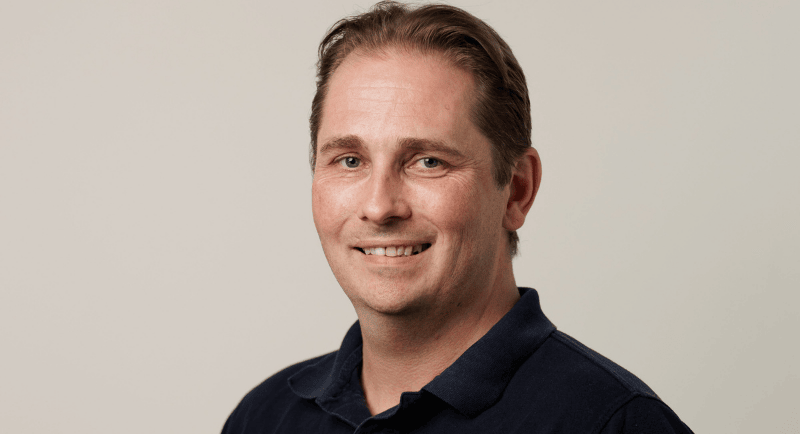
Why long-term tech roadmaps are killing agency growth
By Christian Arpe-Hansen, Partner at Tangram
Agencies today are developing five, even 10-year tech roadmaps. It might look good on paper, but in practice it’s a dead-end for agencies.
Too many organisations are clinging to long-term goals alone, ignoring the reality that things move fast, systems go obsolete, and their sprawling plans simply don’t keep up.
Agencies need to make smarter, faster tech investments today because waiting five years to see results is a recipe for disaster.
The High Cost of Long-Term Thinking
When agencies fixate on a 5 or 10-year strategy, they often box themselves into outdated tech and processes, trapped in a “sit-and-wait” mentality. We’ve all seen how networks brought multiple services under one banner, aiming to streamline offerings and boost efficiency.
This consolidation trend is now reversing in response to market demands, with agencies reintroducing specialised units to meet client needs for tailored services.
The Problem With “All In” Long-Term Commitments
The systems you select in year one may not even exist by year five, or worse, they’ll be entirely irrelevant. Long-term tech plans also leave teams stranded in the interim, working with fragmented, inefficient setups as they wait for the promised overhaul.
In many cases I’ve seen agency priorities shift, industry tools evolve, and by the time the grand vision rolls out (if it even does), it’s already outpaced by the competition.
Changes in legislation is an example of what can scupper long-term plans. Europe is seeing a shift to mandatory e-invoicing which could be making its way across APAC and the rest of EMEA before long.
The solution is to build shorter-term, measurable and most importantly, flexible processes.
Don’t wait for the perfect system that takes five years to materialise, invest in solutions that provide immediate support, data, and actionable insights, without overhauling every department and dashboard along the way.
The Financial Case for Short-Term Strategy
Massive, long-term investments don’t give you a quick ROI, whereas incremental tech investments do.
Along the way, they’ve focused on short-term goals with systems that immediately met the demands of their business, allowing them to pivot and respond to changes quickly.
This is what every agency should aim for: solutions that support where you are now, not where you think you’ll be in five years.
KPIs That Matter Right Now
If you’re looking for stability, it’s time to zero in on KPIs that reflect agency health in real-time, like team utilisation rates, charge-out rates, and client profitability.
These metrics give you actionable insights without waiting for the completion of a full tech overhaul. This structured approach means everyone speaks the same language, making agency-wide improvements possible without the wait.
It builds your team’s commercial understanding and, ultimately, pays for itself quickly.
Future-Proof By Staying Flexible
For agencies, adaptability is the name of the game. Big networks can’t afford to sit on long-term plans that may or may not work out in a few years. The focus should be on building a modular, flexible setup that allows you to adopt new technologies as they come, without overhauling the whole infrastructure.
Long lead times for tech implementation are no longer a viable business strategy. Successful agencies know that planning for an uncertain future requires smart, short-term decisions now.
Embrace solutions that meet your current demands and focus on KPIs that keep your business responsive. Opportunities are waiting, don’t put them off for a five-year plan.
Top image: Christian Arpe-Hansen

Internet advertising spend reaches $4.2 billion in Q1 - fuelled by video
The Australian internet advertising market has reached $4.2 billion for the March 2025 quarter, an increase of 11.6% year on year, according to the IAB Australia Internet Advertising Revenue Report (IARR)
The report also showed that the local market experienced a much softer than usual seasonal decline in spend from the December quarter at -1.8% in 2025 versus -4.2% in 2024.
Growth in advertising spend growth this quarter was fuelled by video advertising which was up 23.3% year on year to reach $1.165 billion and now represents 28% of investment dollars. Search revenue increased 10% year on year to reach $1.896 billion, while Classified listing revenue increased 7.8% to reach $660m driven primarily by the real estate category.
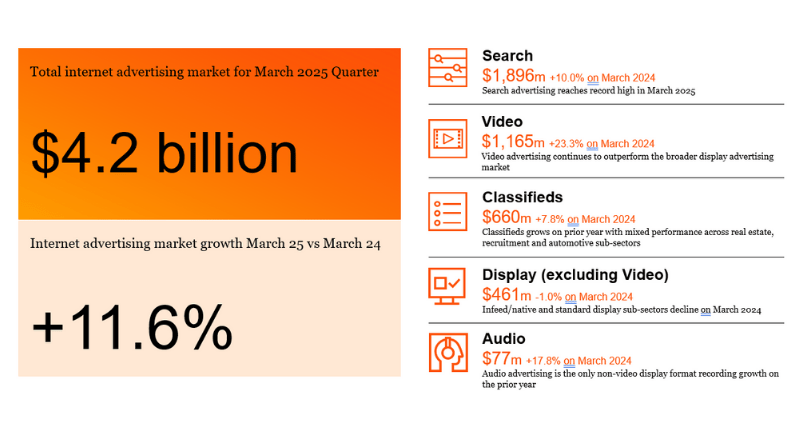
Audio investment also saw an increase in spend of 18% year on year to reach $77.3m in spend, while display advertising (excluding video) softened by 0.9% year on year to reach $461m. Social media, which has revenue allocated within both video and display, had 17% share of the market.
Gai Le Roy, CEO of IAB Australia, said: “The Australian digital advertising market again saw double digit growth year on year in the March quarter, with strong increases in video, search, social and audio.
“While we are seeing solid topline growth there is still some nervousness in the market around long term planning and brand investment which should be tempered by any future interest rate cuts in coming months.”

Retail and auto remained the top two display advertiser investment categories at 17.1% and 12.9% respectively, though their share declined marginally year on year. The finance, FMCG and insurance categories all saw significant jumps in share.
Desktop advertising surged in its share of content publishers and local broadcasters’ video inventory expenditure this quarter, increasing from 32% in the December quarter to reach 42% of investment in the March quarter, however CTV investment remains the largest component of this part of the market at 46% share.
Top image: Gai Le Roy
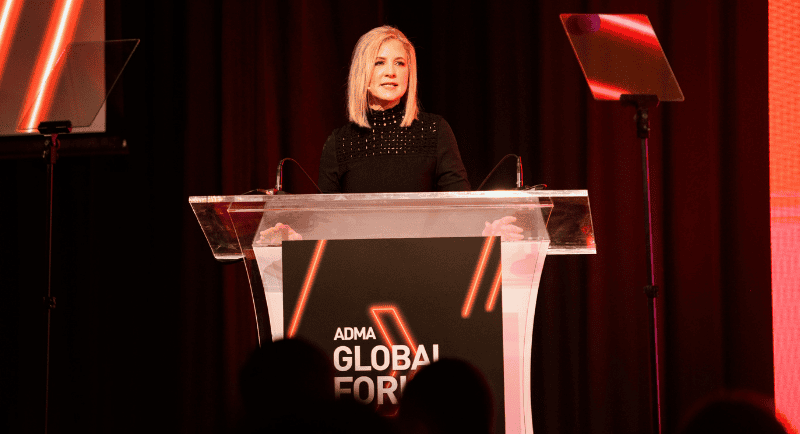
Speakers announced as ADMA Global Forum returns for 2025
The Association for Data-Driven Marketing and Advertising (ADMA) is bringing back its flagship ADMA Global Forum for 2025 to be held at the Sofitel Wentworth Sydney, on Tuesday, August 5.
Among the first confirmed speakers are marketing futurist Tom Goodwin and leadership strategist Holly Ransom who will return as MC.
ADMA has also unveiled a new flexible livestreaming format for the one-day event, which will make the forward-thinking speaker lineup accessible to those unable to attend in person, with the option to tune into content for either the morning, afternoon or both.
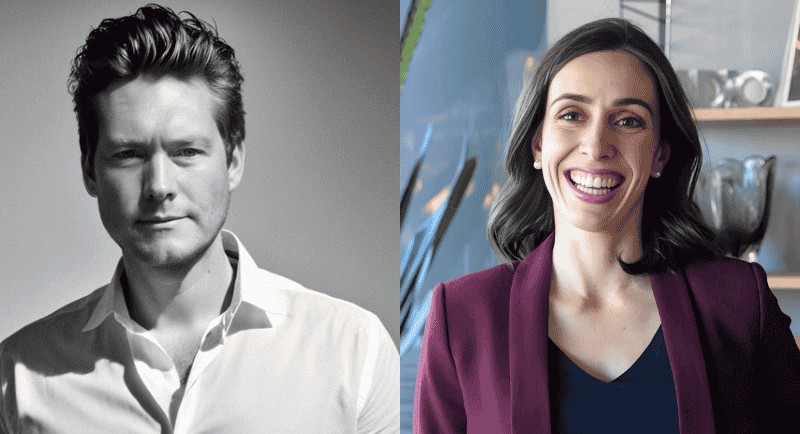
Tom Goodwin and Holly Ransom
“ADMA Global Forum is created by marketers, for marketers – designed to cut through the noise and focus on what really matters,” ADMA CEO Andrea Martens said. “It’s not about chasing trends, but unpacking the strategic, regulatory and capability shifts reshaping our roles.
“Every year, we hear the same thing from our community: ADMA Global Forum delivers the insights they didn’t know they needed – practical, actionable and genuinely useful. It’s not about inspiration for its own sake. It’s about implementation. This is where marketers come to sharpen their thinking, build capability and stay ahead.”
This year’s event continues the bold ‘Elevate’ theme that has defined ADMA’s industry leadership over the past two years – focused on transforming marketers into strategic, future ready leaders equipped with the knowledge they need to lead with confidence and clarity amid constant change.
The program will explore marketing’s next horizon through a dynamic mix of forward-looking themes, ranging from building future-ready teams and delivering standout customer experiences, to navigating compliance, embracing AI, driving greater efficiency and strengthening brand impact.
Each topic has been carefully selected to provide strategic insight and practical takeaways that marketers can apply immediately – ensuring the day delivers real value and more than just big ideas.
Top image: Andrea Martens
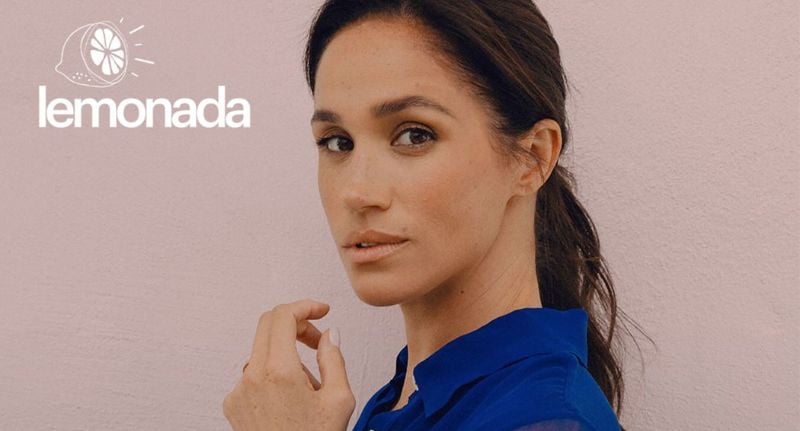
Meghan Markle’s podcast payday pales next to Rogan
The global podcasting industry is awash with cash. Big names are cashing even bigger cheques, with platforms like Spotify and SiriusXM competing fiercely for exclusive content that drives loyal, ad-engaged audiences.
Joe Rogan’s The Joe Rogan Experience reportedly earns a staggering $60 million annually, fuelled by an estimated 190 million downloads per month. While, Alex Cooper, host of Call Her Daddy, has secured back-to-back headline-making deals, a $60 million contract with Spotify in 2021 followed by a $100 million partnership with SiriusXM that includes exclusive advertising and distribution rights.
But not every big name is raking in those kinds of numbers.
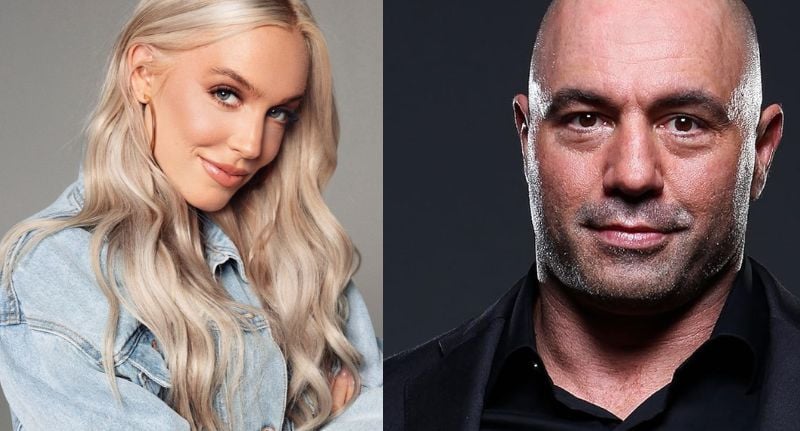
Alex Cooper and Joe Rogan.
‘Confessions of a Female Founder’ wraps with modest return
Meghan Markle’s latest audio outing, Confessions of a Female Founder, appears to have concluded after just eight episodes, and according to one commentator, brought in just $40,000 for the Duchess of Sussex.
That figure, shared by podcaster and journalist Kinsey Schofield on Sky News Australia, is a sharp contrast to the numbers being pulled in by podcasting’s top earners.
While Markle once signed a multi-million-dollar partnership with Spotify, a deal that reportedly collapsed amid unmet benchmarks and internal backlash, her most recent collaboration with Lemonada Media seems to have been a more modest, boutique-style project.
Across the series, Markle interviewed high-profile businesswomen including Spanx’s Sara Blakely, Bumble’s Whitney Wolfe Herd, and IT Cosmetics’ Jamie Kern Lima.
Several of her guests were also founders of companies in which she holds a financial stake, such as Clevr Blends and Highbrow Hippie, a crossover that blends editorial storytelling with brand alignment, albeit on a far smaller commercial scale than the star-studded audio ventures of her peers.
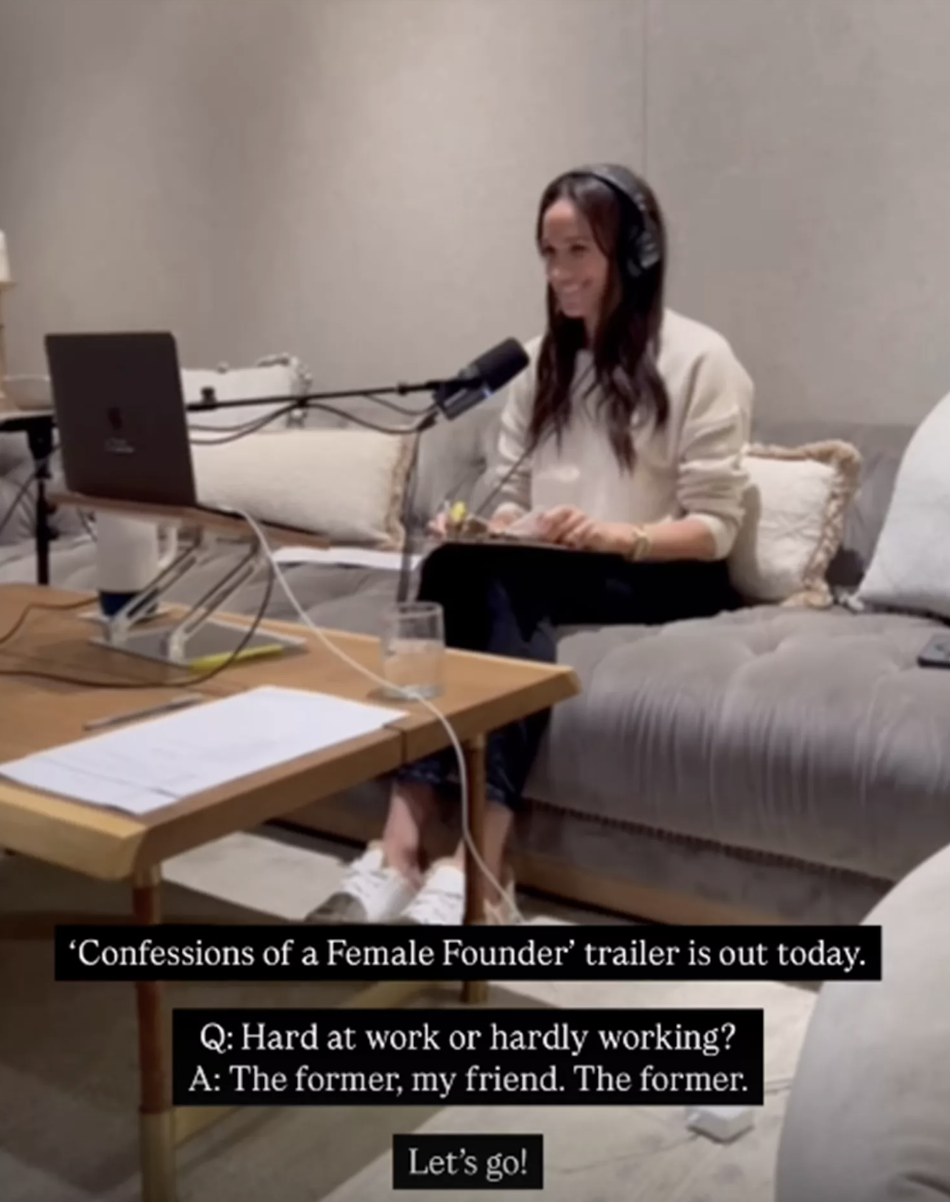
What advertisers really buy into
Sure, Markle’s podcast leans into empowerment and entrepreneurialism, ticking boxes around female-founded storytelling and values-driven branding. But in a competitive market, audience size and engagement are still the key metrics that drive real revenue.
And while Confessions earned a splash of media coverage, it didn’t appear to generate the scale required to unlock serious advertising firepower.
Compare that to the likes of Cooper and Rogan, both known for commanding massive, highly engaged followings.
Cooper’s audience is younger, digitally native, and intensely loyal. Rogan’s spans demographics but is known for its scale and staying power. These listener profiles translate to programmatic advertising, custom brand integrations, and subscription upside, all appealing to marketers looking for addressable reach in a fractured media environment.
Markle’s audience, while clearly curious, didn’t convert into the kind of commercial footprint platforms now expect when signing high-profile talent.
Bonus episode or brand repositioning?
After wrapping the eight-episode run, Markle surprised listeners by dropping a bonus episode featuring Tina Knowles Lawson, Beyoncé’s mother, in what appeared to be a shift back toward her showbiz roots. It was a notable departure from the show’s founder-focused format, and a move some have read as either a strategic pivot or a soft farewell.
Fast Company recently reported there is “interest” in a second season of Confessions, with a number of female entrepreneurs reportedly putting their hands up to be featured.
While Markle’s podcast added a layer of prestige and intention to Lemonada’s slate, its commercial outcome suggests a mismatch between brand power and content scale.
For podcasting to remain lucrative, it must offer more than good PR: it needs consistent, compelling content that cuts through the noise.

Andy Lee's animated show to air on ABC
ABC has announced the premiere of Do Not Watch This Show, a new animated children’s series created by Andy Lee, which will debut on ABC iview at 6am on Friday, 4 July. The series is inspired by Lee’s best-selling book series Do Not Open This Book.
The program centres on Wizz, a blue monster voiced by Lee, who persistently urges viewers not to watch the show, denying his role as its star. Despite his pleas, children are drawn into the absurd antics that ensue. Each of the 12 episodes explores increasingly bizarre reasons behind Wizz’s resistance to fame.
The series features a well-known cast including Denise Scott, Joel Creasey, Kura Forrester and Dave Hughes. Heath McKenzie, the illustrator of the original book series, leads the art direction. Cameos throughout the season include appearances from Hamish Blake, Glenn Robbins, Carrie Bickmore, and Chrissie Swan among others.
Do Not Watch This Show is produced by Lee Bones for ABC, with major investment from Screen Australia in partnership with ABC and VicScreen. It is directed by Leo Baker, produced by Patrick Crawley, and written by a team including Lee, Jason Marion, Katie Westcott, Melanie Bracewell and Ray Matsen.
International sales are handled by Lee Bones/Frank Worldwide Sales.
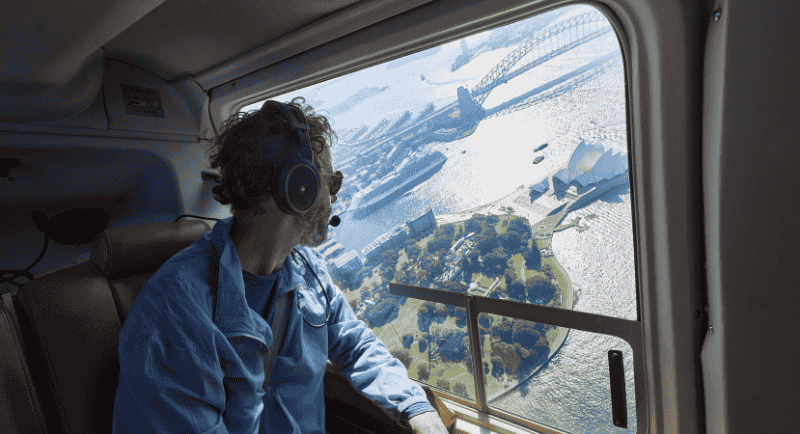
Destination NSW showcases the state’s unexpected side in new campaign
Destination NSW has launched a new brand campaign showing there’s much more of the state to discover beyond the postcard attractions
Research by The Lab has showed that people know Sydney for its incredible icons, but there’s a sense that once travellers have seen the well-known icons, Sydney doesn’t offer anything significantly different from other cities.
The next chapter of Destination NSW’s Feel New platform, partnership Leo Australia, OMD, Ogilvy Australia, FINCH, Rolla, The Editors, Otis and Photoplay, helps locals and visitors reappraise Sydney as a vibrant, surprising and evolving destination.
The campaign spotlights the Harbour City’s infinite range of experiences – the kind you might only hear from a local. It draws inspiration from Sydney’s vibrant culture – particularly as home to the largest Aboriginal population, custodians of the world’s oldest living culture – and its spectacular natural landscapes.

Destination NSW has partnered with six NSW Icons of Culture for the campaign – a group of creatives, tastemakers and trailblazers, who bring a local voice to experiencing Sydney.
These include Olympian Jess Fox, comedic duo The Inspired Unemployed, ultra-marathon runner Nedd Brockmann, content mastermind Lucinda Price (aka Froomes), ARIA-winning musician Budjerah and chef Dan Hong.
Each icon has curated their own personal itinerary, offering visitors a fresh, feeling-led way to experience the city, whether it’s the energy of an early-morning harbour kayak with Jess Fox or taking in the beauty of the Hawkesbury River and freshly picked oysters on a Sydney Oyster Tour with Dan Hong.

Steve Kamper, Minister for Tourism said: “Sydney was just ranked as one of Time Out’s top five global cities for culture, but when you ask Australians about Sydney they’ll say “I’ve already seen the Harbour Bridge.”
“What is clear in the research is that our icons alone are not enough to get people to visit and revisit Sydney. We need to do a better job at showcasing all our city has to offer, we need to be more than our icons.
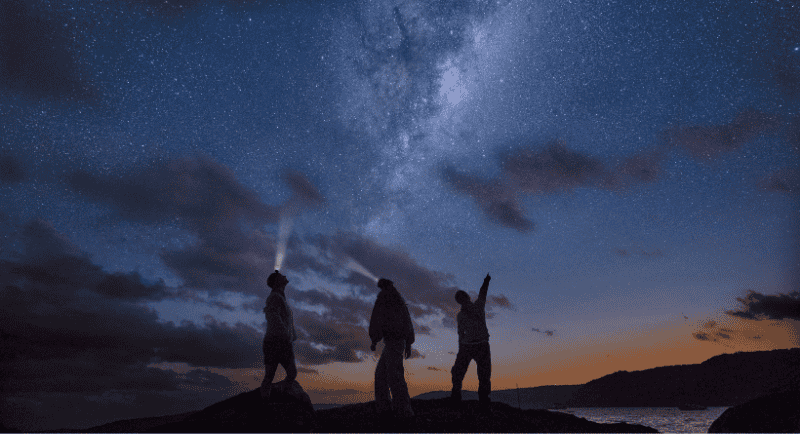
“We have the Blue Mountains, beaches, the Great Southern Reef, and vineyards all within a couple hours. We have world leading restaurants, an exciting blend of food cultures, the largest sporting events and a vibrant arts and music scene.
“We have so much to offer, which is why we are asking Australians to come to Sydney and dive deeper, explore more of what Sydney has to offer.
“There are infinite combinations of experiences on offer, and I think this campaign puts them top of mind for potential visitors.”

Destination NSW CEO Karen Jones said: “Sydney is one of the world’s most recognisable cities – but this campaign invites people to experience it differently. We’re going beyond the icons to show the unexpected and uniquely local side of Sydney that even seasoned travellers may have missed. This is Sydney, as told by those who know and love it best.”
Olympian Jess Fox said: “Training and competing has taken me all over the world, but there’s something about being in Sydney that just feels different. From the harbour to the mountains, there’s an incredible energy here, whether I’m out on the water or exploring the city with friends.
“This city never ceases to amaze me and I can’t wait to help others discover this side of Sydney too,” she added.
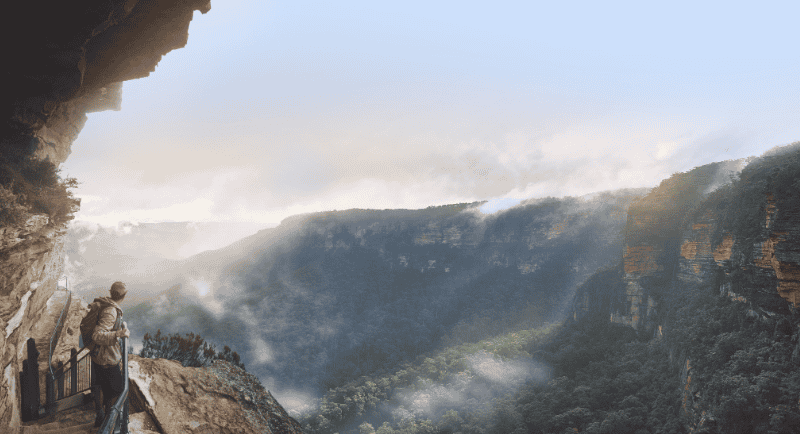
The next chapter of the Feel New campaign will be rolled out across social, digital, TV, out of home and radio in regional NSW, South-East Queensland and Victoria from 1 June to 30 August 2025.
The TV films feature cameo appearances from the six Icons of Culture as well as a range of experiences from dining at Saint Peter to snorkelling the Great Southern Reef and taking in the city from above with Sydney Heli Tours.
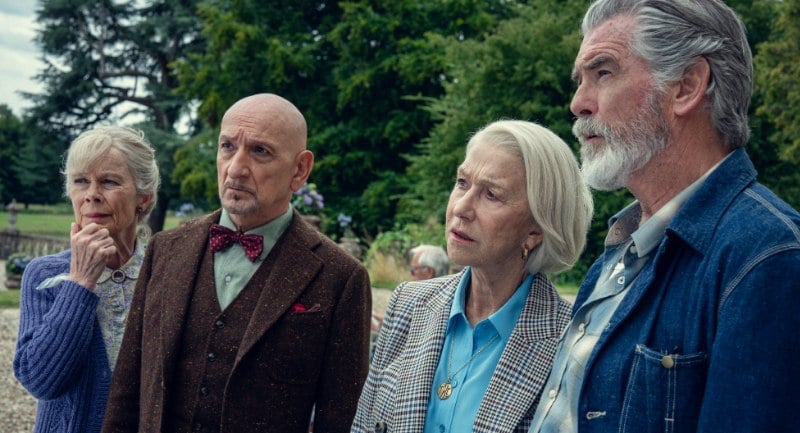
Trailer: Richard Osman’s Thursday Murder Club Netflix show
Based on the best-selling novel by UK media identity Richard Osman, The Thursday Murder Club feature film will debut on Netflix on August 28.
Osman is an interesting media personality with prominent roles both on-screen and behind the camera as a media executive.
He is best known to Australian audiences as the co-host of game show Pointless. He also hosts the BBC game show Richard Osman’s House of Games, which was recently adapted in Australia for the ABC as Claire Hooper’s House of Games. Behind the camera he worked on studio-based shows for Hat Trick Productions and later became Creative Director at Endemol UK.
Media enthusiasts may also know Osman as the co-host of the hugely successful The Rest is Entertainment podcast, alongside Marina Hyde. The two share insider information about how TV is produced, regularly answering emails from listeners.
In 2020 Osman released his first book, The Thursday Murder Club. It was a Sunday Times number one bestseller and he has followed it with a further three books in the series. A fifth book is due later this year.
The Netflix adaptation of the book was produced by Amblin Entertainment for Netflix and directed by Chris Columbus (Gremlins, Home Alone, Pixels). It has a who’s who of British screen actors including Helen Mirren, Pierce Brosnan, Ben Kingsley, Celia Imrie, Naomi Ackie, Daniel Mays, Henry Lloyd-Hughes, Tom Ellis, Jonathan Pryce, David Tennant, Paul Freeman, Geoff Bell, Richard E. Grant, and Ingrid Oliver.
Today saw the release of the first teaser trailer for the movie:
The official synopsis: Based on Richard Osman’s international bestselling novel of the same name, The Thursday Murder Club follows four irrepressible retirees – Elizabeth (Helen Mirren), Ron (Pierce Brosnan), Ibrahim (Ben Kingsley) and Joyce (Celia Imrie) – who spend their time solving cold case murders for fun. When an unexplained death occurs on their own doorstep, their casual sleuthing takes a thrilling turn as they find themselves with a real whodunit on their hands.
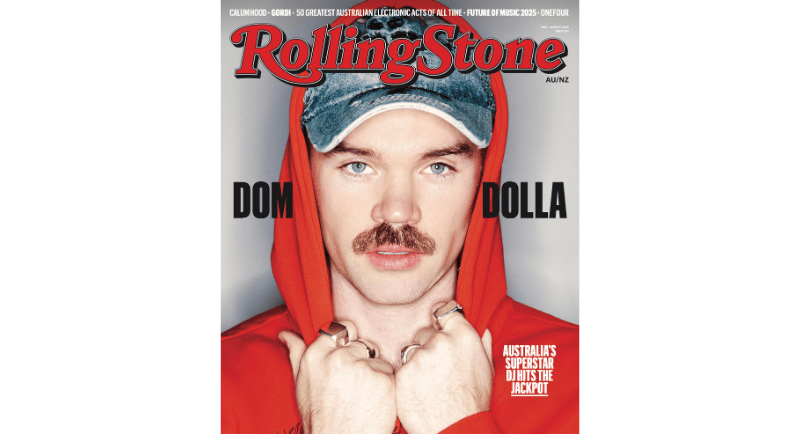
Dom Dolla fronts latest issue Rolling Stone AU/NZ
Australian electronic music star, DJ and producer Dom Dolla is the June-August cover star of Rolling Stone AU/NZ magazine, which hits shelves on June 2.
Dom Dolla (real name Dominic Matheson) is the first electronic artist to appear solo on the cover of the magazine since its return to Australia and expansion into New Zealand.
The hitmaker has been selling out gigs around the world – including at New York’s Madison Square Garden and a record-breaking run in Australia – and was recently awarded the Global Award at the 2025 Rolling Stone Australia Awards.
The cover story charts his decades-long ‘overnight success’ story, and sees Vinyl Media’s Editorial Director Lars Brandle speak to the man himself and those closest to him professionally, including iconic pop music powerhouse Nelly Furtado, legendary British DJ Pete Tong, and ARIA Award-winning DJ and producer Simon Lewicki (Groove Terminator).

Dom Dolla
Furtado said: “I wanted to work with [Dom Dolla] within 20 seconds of first hearing his music. He has the greatest taste in the world; he can hear subtlety in music and that is a gift not everyone has. It’s like the gift of calculated restraint, combined with pure soul. And I fucking love his approach to bass. So signature.”
She adds: “He has a pure love for the actual art form and craft of DJing and beyond that just the community of dance music; he’s doing it for 100 per cent the right reasons. He’s a happy guy with incredibly positive energy that just radiates and everyone wants to experience that elevation, purity, and fun live — myself included. Nights spent watching Dom’s sets have become some of my favourite nights ever.”
Dom Dolla, meanwhile, tells Rolling Stone AU/NZ he’s a perfectionist “at an insane level”: “I wish there were 36 hours in a day and there were 10 days a week. I’d get to do what I wanted to do… I often say to my manager, ‘I wish I could duplicate myself, I wish I could be one person that’s touring and one person writing music’.”
He also explores why Australia has become such a mammoth consumer and exporter of dance music: “Australia being at the forefront of dance music and dance culture, globally, I think is a reflection of how small our population is. Because we have such a small population, from a taste perspective, trends move really, really fast. So, a lot of Aussie dance music producers and songwriters have their finger on the pulse.”
And on a lighter note, he reveals why he’s always spotted sporting a cap on his head: “I started wearing a hat on stage because every time I’d take my headphones off, I’d look like an electrocuted muffin.”
Elsewhere in the magazine, Rolling Stone AU/NZ stays on theme with a comprehensive exploration of the 50 Greatest Australian Electronic Acts of All Time.
Print editor James Jennings concedes all rankings and lists can be controversial, but notes: “Australia has been a hotbed of trailblazing electronic music talent for decades. Dive in to see who made the cut, and feel free to argue amongst yourselves about the rankings (although I’d be surprised if anyone gets upset about who we have placed in the top spot).”
Broadening out, the magazine also brings back its Future 25 list, which reveals the Australian and New Zealand acts to get most excited about this year, from a globe-trotting pop-rock band, to a rising country star, and Australia’s next big electronic music export. The acts on last year’s list – including Dom Dolla himself, Royel Otis and Teen Jesus and the Jean Teasers – have left big shoes to fill for this year’s cohort.
The June-August issue also takes a nuanced and necessary look at Australia’s reluctant embrace of pill testing, the consequences of inaction, and the ideological moralising which shows the debate is far from over.
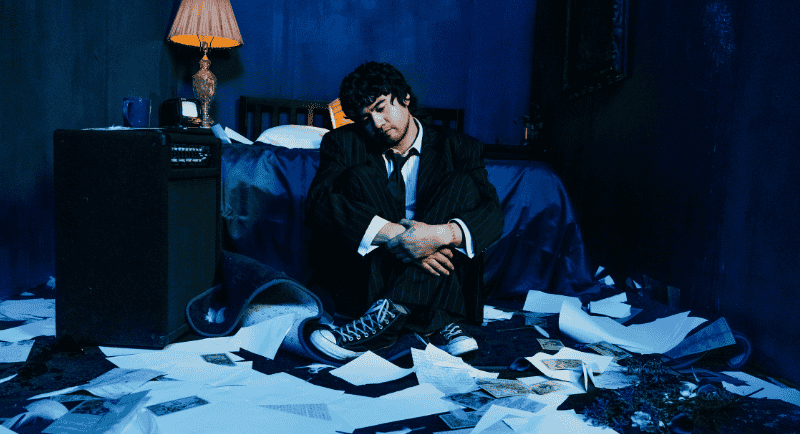
Calum Hood
Plus, Sosefina Fuamoli spends some time with controversial Western Sydney drill rap group ONEFOUR as they prepare the release of their hotly anticipated debut album, and Calum Hood lets readers inside the making of his debut solo album and provides an update on what’s happening with 5 Seconds of Summer.
Neil Griffiths, Editor-In-Chief Rolling Stone AU/NZ, said: “Our latest issue is so big you’ll probably want to hit the dance floor when you’re done reading. We’re counting down the 50 Greatest Australian Electronic Acts of All Time while our cover story tracks the sensational rise of Melbourne’s own Dom Dolla from burgeoning local artist to international superstar.
“But it’s not just all electronic music, 5 Seconds of Summer’s Calum Hood opens up about his new solo career; we spotlight the best up-and-coming Australian and Aotearoa artists in our Future 25 list; and Hollywood favourite Michael Cera talks about finally working with Wes Anderson in his next blockbuster film. There’s something for every kind of music lover.”
Rolling Stone AU/NZ’s average issue readership in Australia reached 232,000 for the 12 months to December 2024, according to the latest Roy Morgan Australian Magazine Readership Report. This places the local print edition of Rolling Stone ahead of staple titles like Harper’s Bazaar, Who, Belle, Australian Traveller, New Scientist and Money Magazine.
Vinyl Media’s network of premium brands now surpasses 160 million monthly page views and reaches 10 million unique Australian users per month across its top 50 sites, plus more through the Playwire network, cementing its position as Australia’s largest creator of premium youth content and events.
Rolling Stone AU/NZ magazine hits shelves on Monday June 2, 2025
Social media
Tech giants turn up the volume on social media law fight
As James Madden writes in The Australian, it’s the first major move in what’s shaping up to be a full-blown PR arms race between platforms and Canberra over looming age-restriction laws.
The Albanese government is under mounting pressure to follow through on its pre-election promises around social media access and the news media bargaining code.
Journalism
Laura Tingle lets loose on Coalition chaos
Her spray comes after last week’s blink-and-you-missed-it split between the Nationals and Liberals, which was quickly reversed after a flurry of policy disagreements were, according to David Littleproud, “resolved.”
But as Joshua Haigh writes on news.com.au, Tingle clearly isn’t buying it, calling the whole performance a waste of taxpayers’ time.
Television
Breakfast shows quietly stretch the clock
It’s a quiet tradition that’s been happening for years, despite what the EPG (Electronic Program Guide) might tell you.
David Knox at TV Tonight crunched the numbers and found both programs regularly push well past the hour. On some days in May, Sunrise ran until 9:14am, while Today clocked off at 9:13am. Not a glitch, just standard practice.
Brands
Nike faces backlash over Grace Tame posts
Tame recently reposted content accusing Israel of promoting “Jewish supremacist ethnonationalism” and shared posts from controversial figures like Ghassan Hage and Mohammed el-Kurd, both of whom have been heavily criticised for rhetoric seen as justifying or glorifying violence.
But as Yoni Bashan writes in The Australian, Nike has yet to comment publicly on the matter.
AI
Business
Digital ad spend dips slightly but still holds year-on-year gains
According to James Madden in The Australian, that’s just shy of where things sat in September and a touch down from the December quarter peak, according to the latest IAB Australia and PwC figures.
But zoom out, and the picture isn’t quite so bleak.
Companies
Right to disconnect lands in court in landmark teacher case
The lawsuit, lodged against Cairns Hinterland Steiner School, is the first to test the Albanese government’s freshly minted right to disconnect laws.
As David Marin-Guzman writes in the Australian Financial Review, legal observers have warned it might open the door to a new era of workplace litigation, and this case could set the tone.
Vale
Valerie Mahaffey remembered for quirky roles and chilling twists
Her husband, actor Joseph Kell, confirmed she lost her battle with cancer.
As Claire Fahy reports in The Sydney Morning Herald, while often cast as the friendly face with a sinister edge, Mahaffey’s range was undeniable.
To Top
